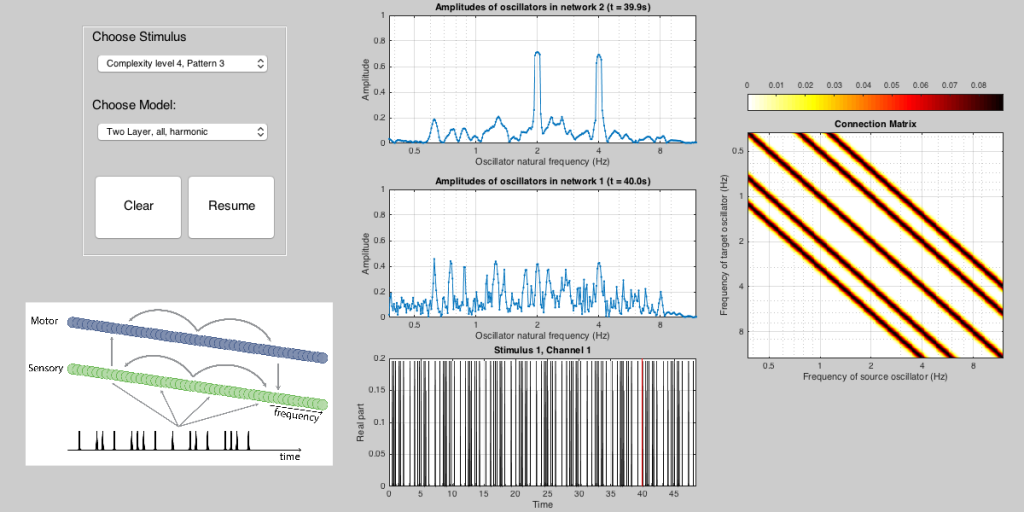Entrainment of cortical rhythms to acoustic rhythms has been hypothesized to be the neural correlate of pulse and meter perception in music. Recently, we showed how self-organization of oscillations in interacting sensory and motor networks could be responsible for the formation of the pulse percept in complex rhythms (Large, Herrera and Velasco, 2015). This model is one of the few consistent with neurophysiological evidence on the role of neural oscillation, and it explains a phenomenon (the “missing pulse”) that other computational models fail to explain. This model provides a theoretical link between oscillatory neurodynamics and the induction of pulse and meter in musical rhythm.
The GrFNNRhythm repository contains MATLAB code that runs models of beat perception in musical rhythm using the GrFNN Toolbox. A user interface allows the user to choose a stimulus of a given rhythmic complexity (from a straightforward isochronous rhythm to more rhythmically complex, syncopated rhythms) and process it through one of the following six GrFNN models:
- One network with no internal connections. Select “One Layer” in the dropdown menu.
- One network with local (1:1) internal connections. Select “One Layer, local connection” in the dropdown menu.
- One network with 1:1, 2:1, 3:1, 1:2, and 1:3 internal connections. Select “One Layer, harmonic connections” in the dropdown menu.
- Two networks with local (1:1) afferent connections, no internal connections. Select “Two Layer, afferent only”.
- Two networks with local (1:1) afferent, efferent, and internal connections. Select “Two Layer, all, local”.
- Two networks with 1:1, 2:1, 3:1, 1:2, and 1:3 afferent, efferent, and internal connections. Select “Two Layer, all, harmonic”.
Model #6 is equivalent to the model of Large, Herrera and Velasco (2015).
References:
Large, E. W., Herrera J. A. and Velasco M. J. (2015). Neural networks for beat perception in musical rhythm. Frontiers in Systems Neuroscience. 9 (159). doi: 10.3389/fnsys.2015.00159
